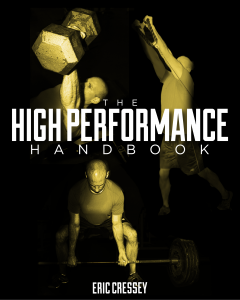
Band-Resisted Training for Power
Chat with any powerlifter about how he utilizes bands in his training, and you’ll likely hear that they’re used for accommodating resistances to build strength. In other words, you can set up the bands to make an exercise harder at the portions of the strength curve at which you’re strongest. And, this is certainly an awesome application that’s helped thousands of lifters (myself included) to build strength.
Being a former competitive powerlifter until just a few years ago, I’d looked at bands as something that could only make an exercise harder. Over the years, though, I’ve come around and begun to look for ways to utilize them to make things easier with our beginners. And, obviously, using them for pull-up and push-up assistance can be extremely helpful with working with new clients.
I did not always, however, realize that there was also a middle ground between these two extremes (advanced lifter and novice client). In this capacity, more and more, we use bands with our athletes to be able to train power more aggressively, and more frequently. How do the bands fit in? They lower the landing stress on more horizontal and lateral power exercises.
Need proof? Let’s imagine “Athlete A” does three sets of five broad jumps (standing long jumps). Then, he lets us know how his shins feel 36-48 hours later. The soreness is absurd.
Simultaneously, we have “Athlete B” do the same volume of broad jumps, but with band resistance, like this:
I guarantee you that Athlete B has dramatically less soreness in the post-training period than Athlete A. And, while I don’t have all kinds of force plate data to back up my assertions, it’s safe to assume that the addition of the band reduces ground reaction forces. It’s like a box jump; we go up, but don’t come down (very much).
We’ll also use this for band-resisted heidens to develop some power in the frontal plane:
I love these band-resisted jumping options for a number of reasons. First, they allow us to train power with a bit more external loading in planes of motion we’d previously been unable to load – and this shifts things to the left a bit on the Absolute Strength – Absolute Speed Continuum.
Second, the pull of the band actually teaches athletes to get back into their hips more. You’ll often find that athletes don’t really know how to pre-stretch the glutes prior to power work in these planes. When a band is added, they simply can’t “drift into the quads;” they have to get back into the hips.
Third, and perhaps most importantly, the reduced impact nature of these drills makes them a potentially useful addition to a return to action plan as an athlete is returning from an injury. It can also be a potentially useful application in older clients with whom we want to safely train power (because the loss of power is one of the biggest problems at we age). Full tilt sprinting and lots of plyometric work with loads of landing stress won’t necessarily fly, but these options (and band-resisted sprinting) can definitely lower the stress.
Fourth, with our pro baseball players, I like to use these in the early off-season as we get back to training power, but don’t want to beat up on the guys’ bodies with lots of stressful deceleration work. They jump out, but don’t come down as hard.
Bands are one of the best “take-it-anywhere” pieces of training equipment one can have, and it’s awesome that new uses for them are emerging on a regular basis. This is one such example – so I’d definitely encourage you to play around with these variations and see how you like them.
Looking for more innovative training strategies like these? Be sure to check out The High Performance Handbook, the most versatile strength and conditioning program on the market today. It’s on sale for an additional $50 off with coupon code OCT24 through Sunday at midnight at www.HighPerformanceHandbook.com.




